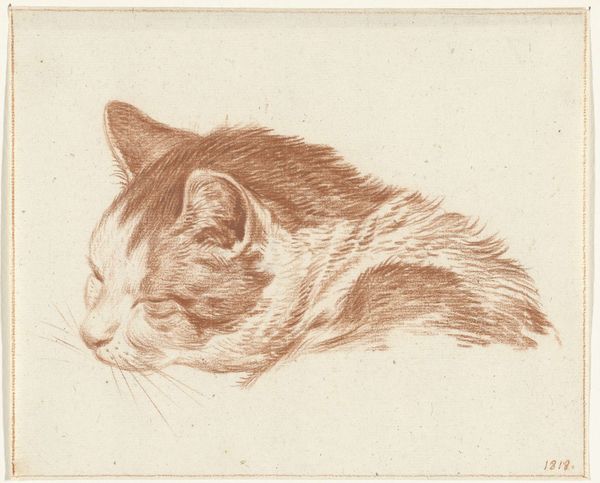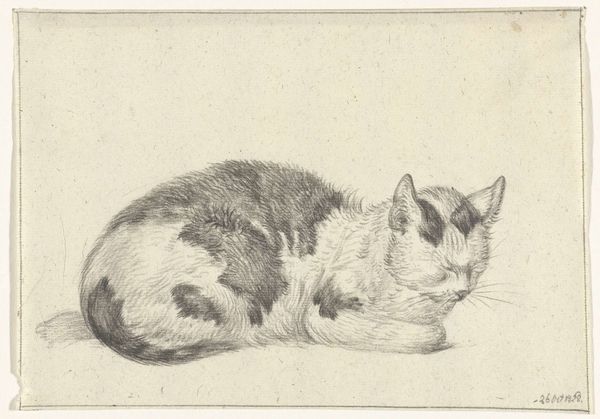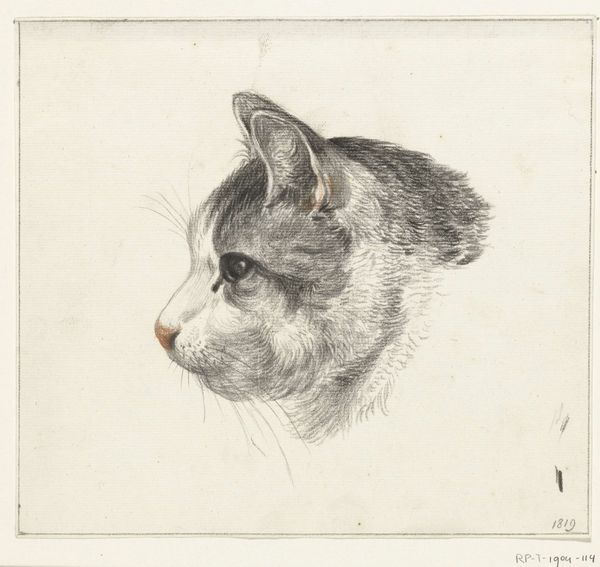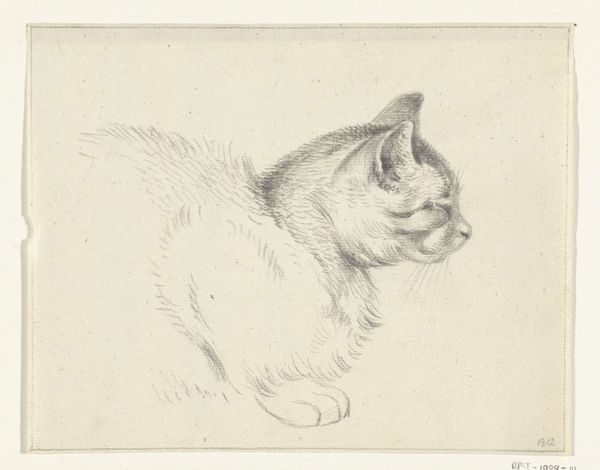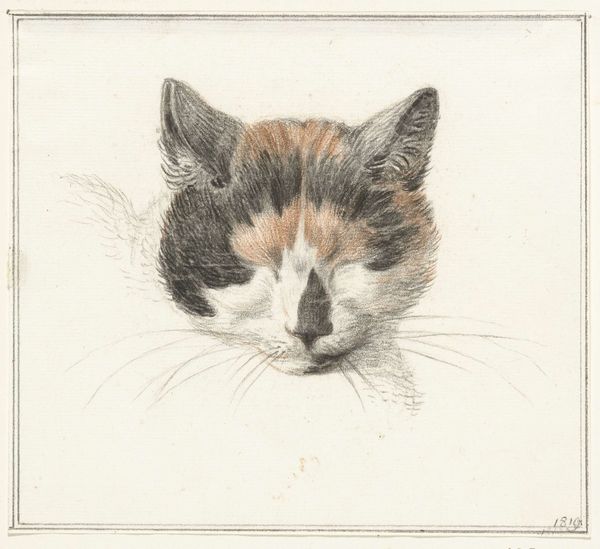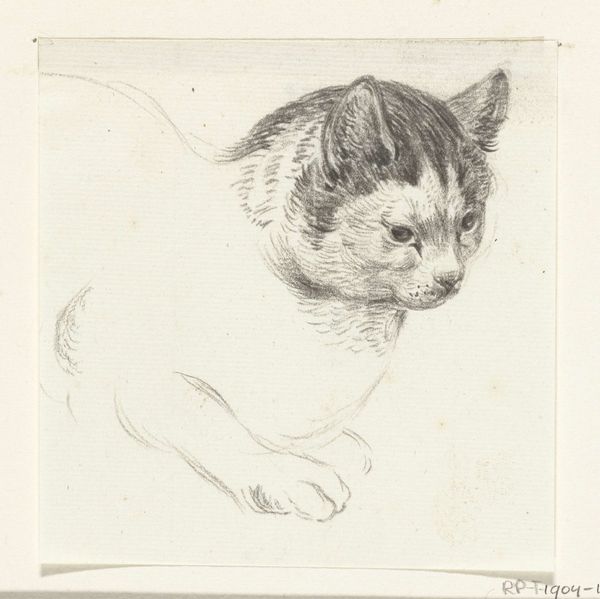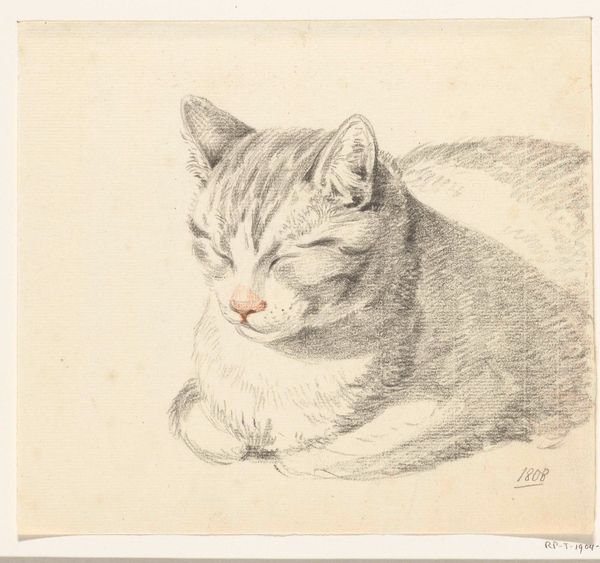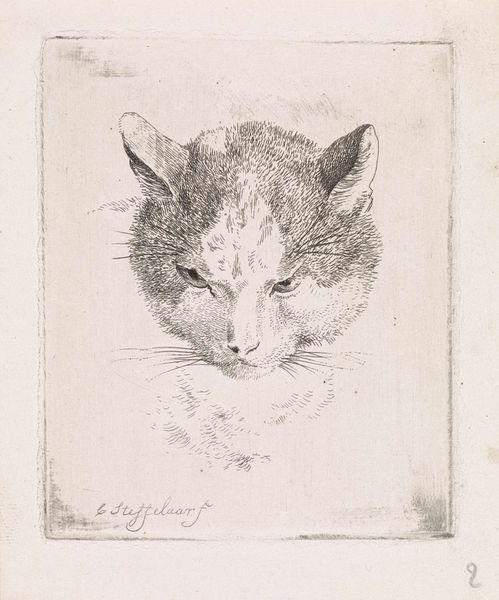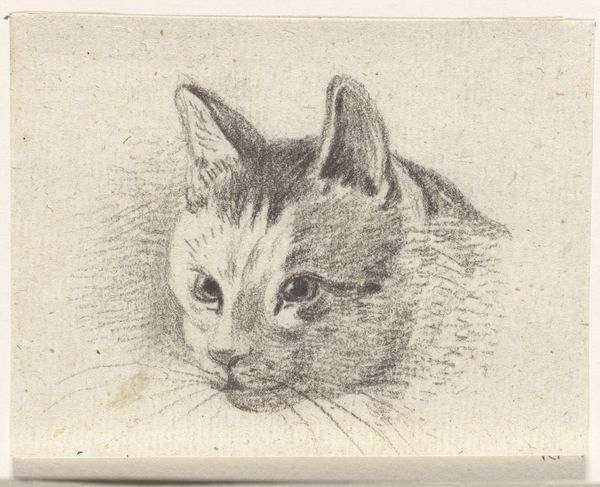
#
pencil drawn
#
amateur sketch
#
toned paper
#
light pencil work
#
pencil sketch
#
old engraving style
#
personal sketchbook
#
pencil drawing
#
sketchbook drawing
#
pencil work
Dimensions: height 107 mm, width 115 mm
Copyright: Rijks Museum: Open Domain
Editor: This is "Kop van een kat," or "Head of a Cat," a pencil drawing made sometime between 1775 and 1833 by Jean Bernard. It's a very simple composition; just the head of a cat, but I find it strangely calming. What do you see in this piece? Curator: This drawing, though seemingly simple, is saturated with symbolic potential. Consider the cat itself: across cultures, it embodies both domesticity and wildness, independence and mystery. Think of Ancient Egypt, where cats were revered as protectors, or medieval Europe, where they were often associated with witchcraft. Does this image lean more towards one side of that duality for you? Editor: I see more domesticity, it seems peaceful. The cat’s eyes are closed, it's a very intimate study. Curator: Precisely. The closed eyes shift our focus inward. What emotions do they evoke? Sleep? Contentment? Perhaps even a hint of vulnerability? Notice also the use of light and shadow. Bernard uses simple pencil strokes, but the variations create depth and form. Consider, too, how often cats appear in art and literature—always acting as potent symbols for various human concepts. Editor: So, it's more than just a drawing of a cat. It's loaded with cultural baggage. Curator: Exactly. The artist may not have consciously intended all of these layers, but by engaging with these symbols, we enrich our understanding and perception, drawing on centuries of art and lore about an animal familiar to everyone. Even a seemingly simple image, such as this one, resonates with centuries of symbolism. Editor: I’ll never look at a cat drawing the same way again. Thank you!
Comments
No comments
Be the first to comment and join the conversation on the ultimate creative platform.
